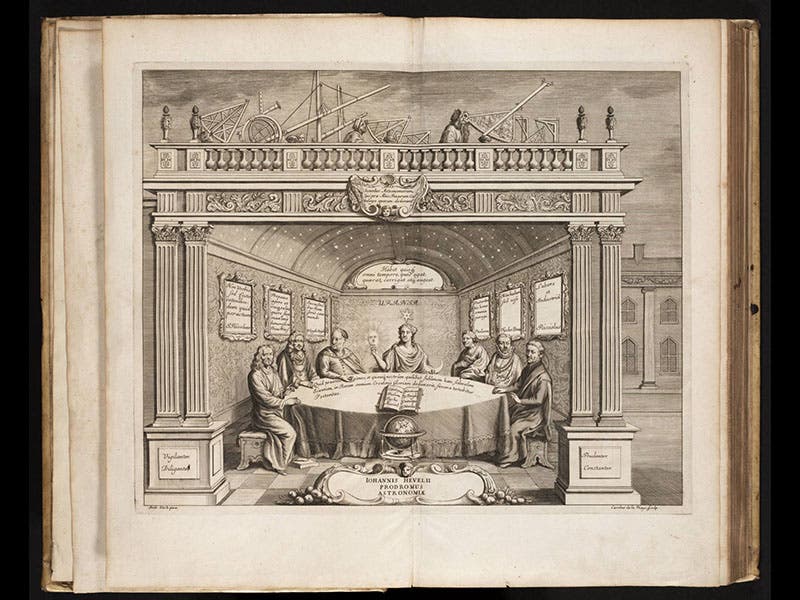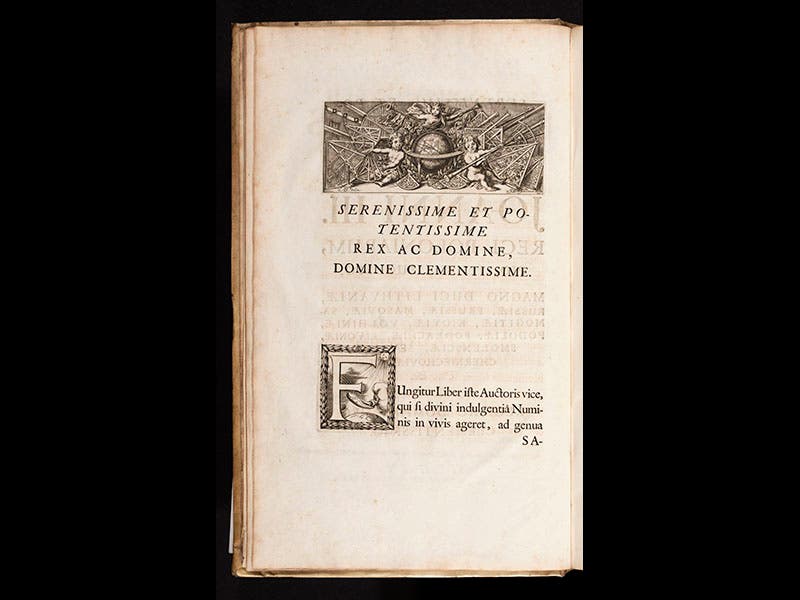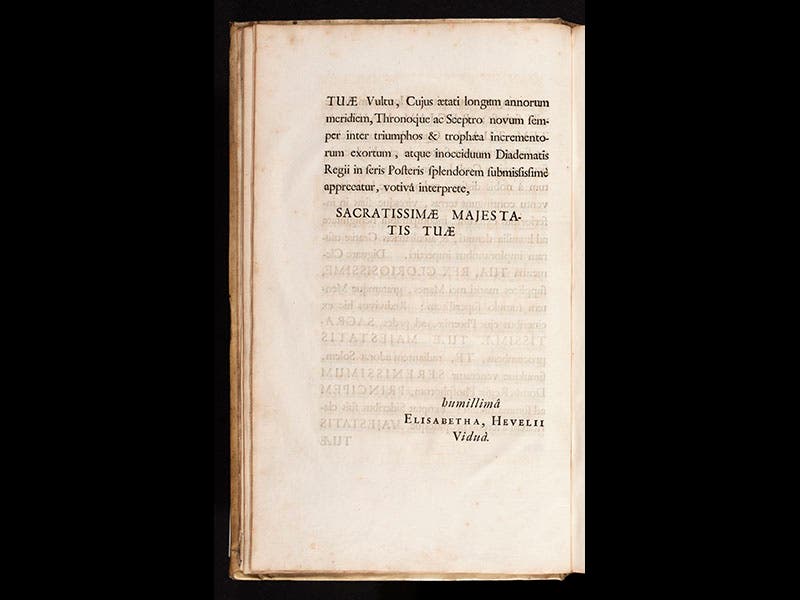Scientist of the Day - Elisabeth Hevelius

Linda Hall Library
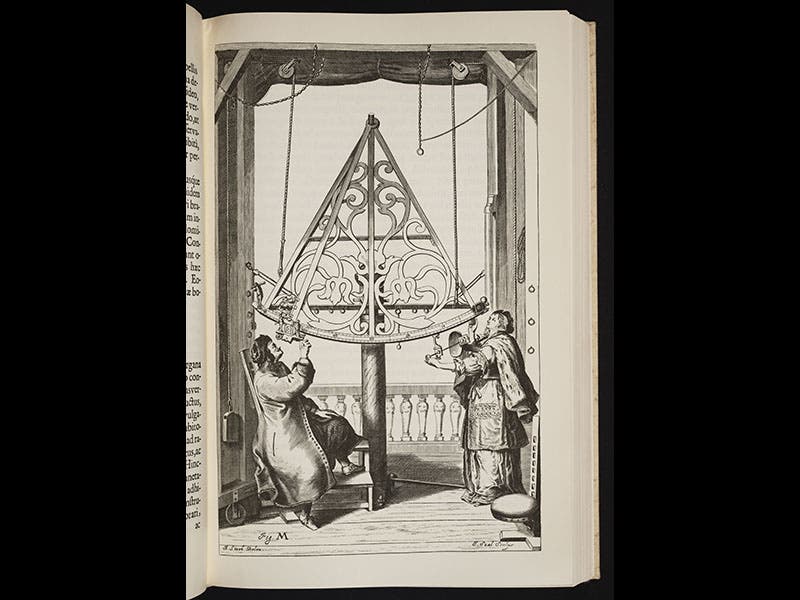
Linda Hall Library
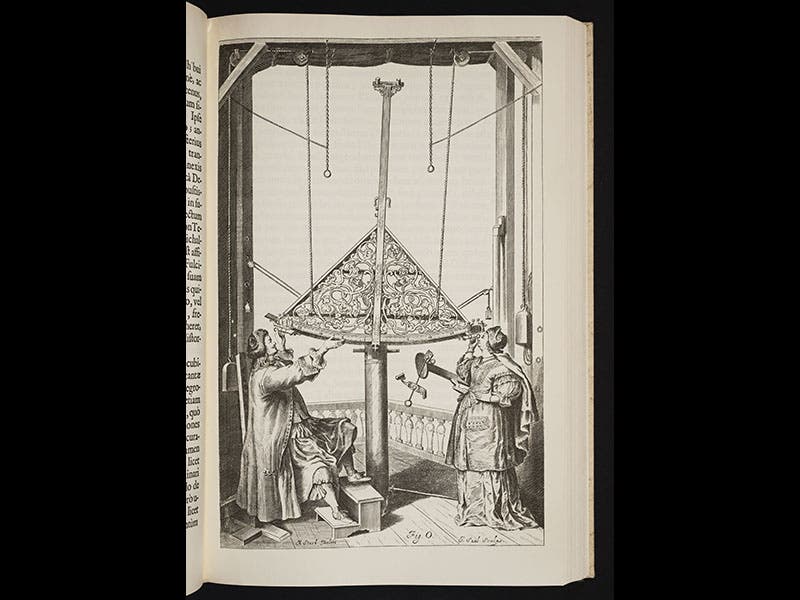
Linda Hall Library
Elisabeth Catherina Koopman Hevelius, a Dutch/German/Polish astronomer, died Dec. 22, 1693. Elisabeth was born in Danzig in 1647, where the eminent astronomer Johannes Hevelius worked and had an observatory. The very year Elisabeth was born, Johannes published his Selenographia, the most elaborately illustrated astronomy folio printed to date, and the first geographical book devoted to a body other than the Earth. Elisabeth developed an early interest in astronomy and a reverence for the elder astronomer, and when Hevelius’s first wife died in 1662, Elisabeth eased into the breach, and the two were married in 1663. Elisabeth was 16; Johannes was 52.
Elisabeth had to run a complicated household and raise a family, but she also entered into an observing partnership with her husband. Johannes in the 1660s was compiling a new catalog of the stars, and Elisabeth appears to have demonstrated competence with the large sextants and quadrants that Hevelius used for his observing program. When Hevelius published a book about the instruments of his observatory, the Machina coelestis (1673), he included two large engravings that showed Johannes at one side of an octant (second image) and a sextant (third image), and Elisabeth at the other. The first image, showing just Elisabeth, is a detail of the second. These are the first illustrations ever printed of a woman astronomer at work. We do not own a copy of the Machina–it is very scarce, since most copies burned up in an observatory fire in 1679–but we have a fine facsimile, from which the images above were scanned.
Hevelius managed to compile his star atlas and get the copper plates engraved, but he died in 1687 before it could be printed; the accompanying star catalog was only half-completed. Elisabeth secured funding to complete the catalog, and she saw both works through publication in 1690. The star atlas was called the Firmamentum Sobiescianum., and the catalog was titled Prodromus astronomiae. Although each is a separate work and has its own engraved title page, they were issued together, and we have a fine set, bound in vellum, in our History of Science Collection. The engraved title page above (fourth image) is that of the Prodromus, which Elisabeth completed. She also wrote and signed the dedication to King John III Sobieski, the long-time patron of Hevelius; we see above her printed signature: “Elisabeth, widow of Hevelius” (sixth image), and the opening of the dedication, which features an initial letter designed just for the occasion (fifth image). It shows Scutum Sobiescanum, the Shield of Sobieski, a constellation that Hevelius invented and named after his patron.
Elisabeth is sometimes described as the first woman astronomer of the early modern era, but she is not–that honor goes to Maria Cunitz of Silesia, whose Urania propitia was published in 1650. But Elisabeth was nevertheless a pioneer woman astronomer, and the most important precursor of Caroline Herschel, the sister of and astronomical assistant to William Herschel from 1780 on.
Dr. William B. Ashworth, Jr., Consultant for the History of Science, Linda Hall Library and Associate Professor, Department of History, University of Missouri-Kansas City. Comments or corrections are welcome; please direct to ashworthw@umkc.edu.


